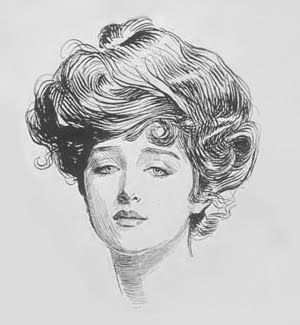Wednesday, September 29, 2010
My latest project!!
I made a wardrobe (now listed on Etsy) which consists of two Civil War dresses and two pairs of pantaloons!! I haven't listed the pantaloons yet, but I intend to shortly!! I love sets :-) Maybe I can post some pictures of them later!
Monday, May 17, 2010
The Corset Advances!!

I did some research and found that sewing machines in the eighteen-sixties sewed a chain stitch. As my sewing machine does NOT sew a chain stitch, I thought it better to hand sew my corset. I am in the process of doing so, and put grommets on one side just today :) It's a lot fun, though with all the other projects I'm working on it's going rather slowly. If you look at the picture above you can see on the right my cane boning, which I cut, soaked in warm water, and set out to dry. Below are the original pattern pieces, above are my altered pattern pieces.
Wednesday, March 31, 2010

I am making an 1860's replica Corset, I am basing my corset off of this corset here, as well as a corset from "Corsets and Crinolines." I blew the pattern, (taken from an original corset), which is included in "Corsets and Crinolines" up to it's real size, I than measured the pattern, added 4 inches to the waist (the thing measured 18 inches!!) and made a mock up. I had to adjust the mock-up a little, but now have my finished pattern all ready for sewing. I intend to get some Cotton Twill to sew it in, as this was generally used in corsets at the time, and already have some cane strips to turn into boning. We shall see what we shall see!!!
Tuesday, March 9, 2010
Fabrics
Fabrics

Cotton
Cotton fabrics are generally light and very breathable (cool to wear.) Cotton clothing needs to be ironed after every washing, as it wrinkles abominably. It can be washed and ironed at high temperatures, and is a fairly sturdy fabric.
Some cotton fabrics, such as Sailcloth, Drill, and Duck are heavy weight fabrics. Duck and Sailcloth cottons are generally not used in clothing, however.
Silk
Silk fabrics are used for formal clothing. They are generally delicate, thin fabrics, with a few exceptions, such as silk brocade. Silk is hand washable, but should not be dried in an automatic dryer. Silk is cool in the summer, and warm in the winter, it has a beautiful shimmer, and is generally expensive.
Wool
Wool shapes well, absorbs moisture, and is very durable. It is hand washable. It usually comes in one of two different forms: Woolen and Worsted Wool.
Woolen is generally a heavy, soft, thick fabric. It’s very efficient at keeping in heat, and is used in heavy winter blankets, scarves, winter cloths, coats, and Civil War reenactor’s cloaks :)
Worsted wool is generally a lighter weight fabric, it’s very soft, durable, has a light sheen, and holds its shape. It breathes well, is cool in summer and warm in winter, and is used in finely tailored clothing.
Linen
Linen is hand washable and lint free. It comes in heavy and light weaves, it’s a sturdy, cool, fabric, and is used in tablecloths, suiting, and general clothing items.
Polyester
Polyester is a synthetic, strong, wrinkle-free fabric. It melts at medium high temperatures, and in my opinion is best when mixed with a natural fabric. It doesn’t breathe much and for this reason can be very uncomfortable to wear, especially when it is hot and humid outside.Polyester Blends
Polyester blends are more washable than polyester, (although they still don’t like extremely high heats), and don’t wrinkle quite like natural fabrics do. Still, they don’t breathe as well as natural fabrics do, either.Some of this information was gathered from fabrics.net. If you want more information on fabrics, I would recommend it as the place to go.
Tuesday, March 2, 2010
Formal Pattern Drafting --- A Sheath Dress

I fully lined this dress. It is made of a black sequin material, and has a pointed empire waistline, raglan cap sleeves, a kick pleat, and a "V" shaped neckline.
Sunday, February 21, 2010
Pattern Drafting --- A Drop-shouldered Blouse

I drated this pattern using "Pattern drafting & grading: Women's and misses' garment design." I first drafted their fitted bodice base pattern, using the measurements of the girl I intended to make this blouse for, and this pattern drafting book's ratios and techniques. I then followed the instructions given in the pattern drafting book for my desired design (shown below). I made the "sleeves" according to another design from the same book, using a drop shoulder method found in the pattern drafting book. I had to make a peplum for the bottom of this blouse, because this blouse pattern is meant to be used for a dress, and so ends exactly at the waist. (Therefore, the peplum piece begins exactly at the waist and continues to the end of the blouse.) I used the hip extension for the bodice base pattern as a template for my peplum.


(Pattern Drafting and Grading, pg. 25)
Sunday, February 14, 2010
Pattern Review --- Simplicity 5098 Pattern Review
Pattern Rating: Four Out of Five Stars
I recommend this pattern with these changes: When selecting your size look at the finished measurements for the bust, which is printed on the bodice front pattern piece. Select a size that gives you approximately 1 1/2 - 2 1/2 inches of ease, (for example, I am a size 10, I made this shirt in a size 6). Than look at the back of the pattern; if your waist is more than two inches larger than the size you have selected, you will have to cut the pattern out on a larger size at the waist, as shown by the red line in Diagram A below.
Diagram A
Subscribe to:
Comments (Atom)



